友情支持
如果您觉得这个笔记对您有所帮助,看在D瓜哥码这么多字的辛苦上,请友情支持一下,D瓜哥感激不尽,😜
|
|
有些打赏的朋友希望可以加个好友,欢迎关注D 瓜哥的微信公众号,这样就可以通过公众号的回复直接给我发信息。

公众号的微信号是: jikerizhi。因为众所周知的原因,有时图片加载不出来。 如果图片加载不出来可以直接通过搜索微信号来查找我的公众号。 |
42. 接雨水
给定 n 个非负整数表示每个宽度为 1 的柱子的高度图,计算按此排列的柱子,下雨之后能接多少雨水。
示例 1:
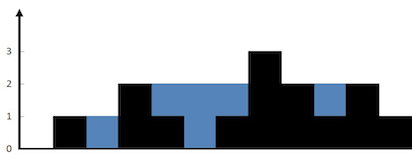
输入:height = [0,1,0,2,1,0,1,3,2,1,2,1] 输出:6 解释:上面是由数组 [0,1,0,2,1,0,1,3,2,1,2,1] 表示的高度图,在这种情况下,可以接 6 个单位的雨水(蓝色部分表示雨水)。
示例 2:
输入:height = [4,2,0,3,2,5] 输出:9
提示:
-
n == height.length -
1 <= n <= 2 * 104 -
0 <= height[i] <= 105
解题分析
这道题最简单的思路是双指针,类似 11. 盛最多水的容器 的思路:两端指针,保存两端最高柱子高度,谁低计算谁的盛水数量,向前推进。
单调栈解法图示:
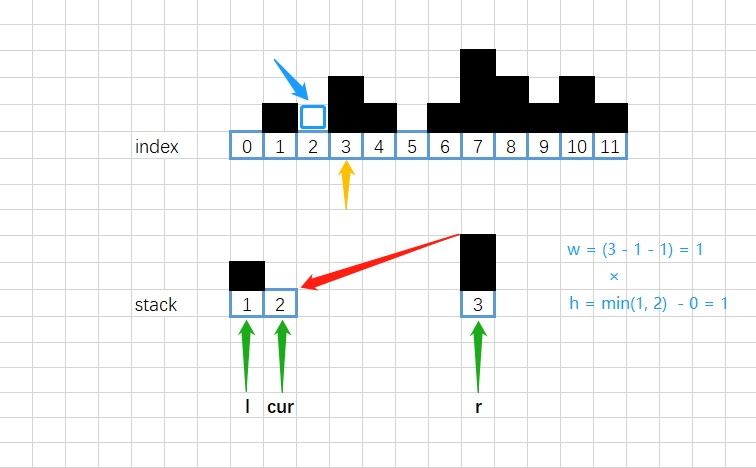
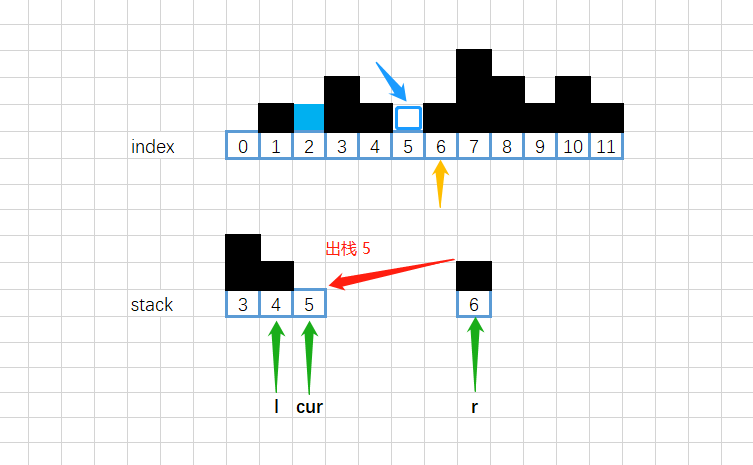
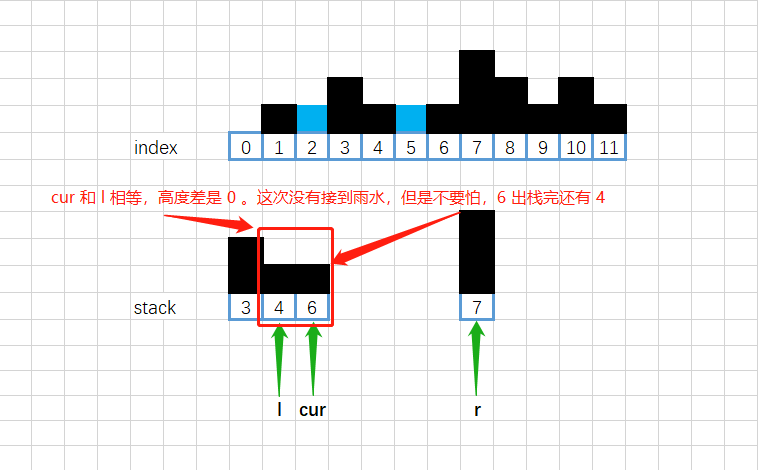
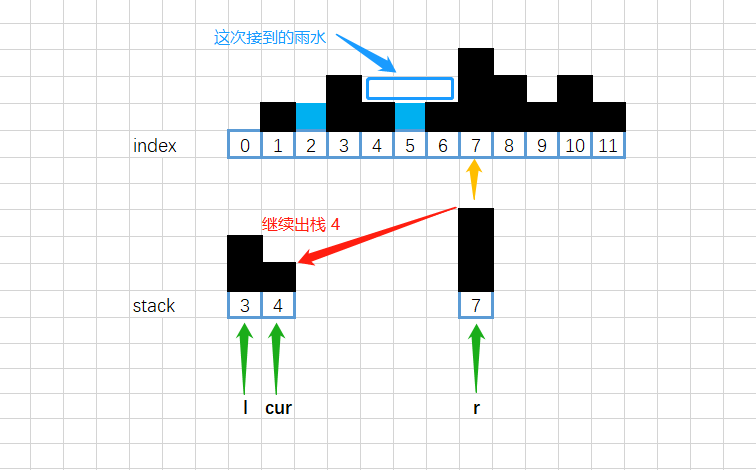
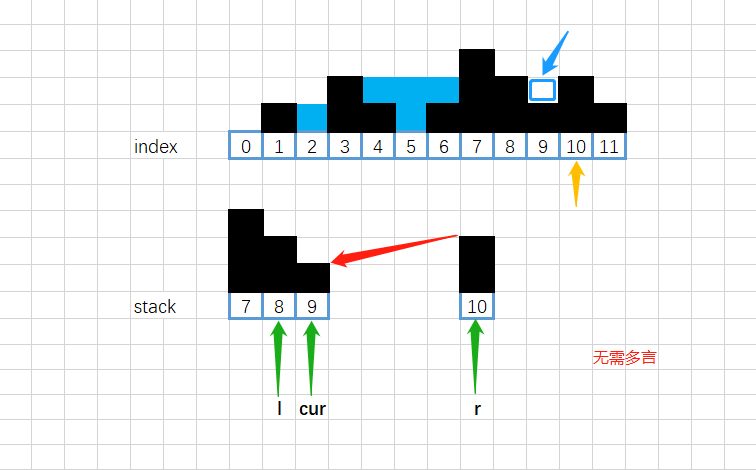
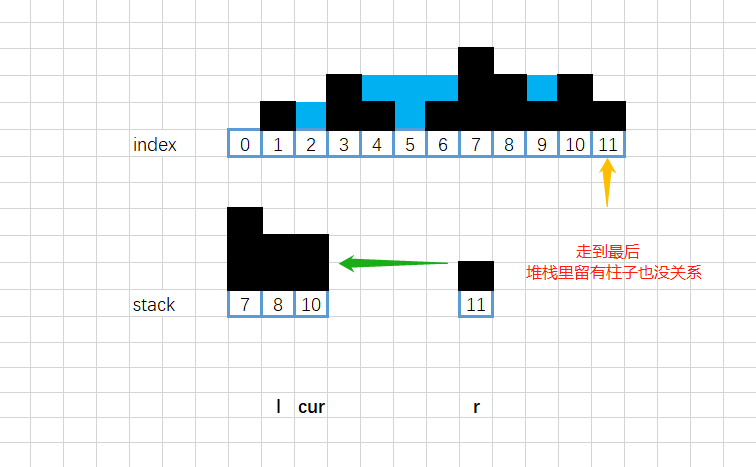
-
一刷
-
二刷
-
三刷
-
四刷
-
五刷
-
六刷
1
2
3
4
5
6
7
8
9
10
11
12
13
14
15
16
17
18
19
20
21
22
23
24
25
26
27
28
29
30
31
32
/**
* Runtime: 0 ms, faster than 100.00% of Java online submissions for Trapping Rain Water.
* Memory Usage: 38.3 MB, less than 91.10% of Java online submissions for Trapping Rain Water.
*
* Copy from: https://leetcode-cn.com/problems/trapping-rain-water/solution/xiang-xi-tong-su-de-si-lu-fen-xi-duo-jie-fa-by-w-8/[详细通俗的思路分析,多解法 - 接雨水 - 力扣(LeetCode)]
*
* @author D瓜哥 · https://www.diguage.com
* @since 2019-07-26 08:49
*/
public int trap(int[] height) {
int left = 0, right = height.length - 1;
int result = 0;
int leftMax = 0, rightMax = 0;
while (left < right) {
if (height[left] < height[right]) {
if (height[left] >= leftMax) {
leftMax = height[left];
} else {
result += (leftMax - height[left]);
}
++left;
} else {
if (height[right] > rightMax) {
rightMax = height[right];
} else {
result += (rightMax - height[right]);
}
--right;
}
}
return result;
}
1
2
3
4
5
6
7
8
9
10
11
12
13
14
15
16
17
18
19
20
21
22
23
24
25
26
27
28
29
30
/**
* @author D瓜哥 · https://www.diguage.com
* @since 2024-07-31 17:27:46
*/
public int trap(int[] height) {
int result = 0;
Deque<Integer> stack = new LinkedList<>();
stack.push(0);
for (int r = 1; r < height.length; r++) {
// 单调递减,则将小的元素都出栈
while (!stack.isEmpty() && height[stack.peek()] < height[r]) {
// 递减栈,栈顶最小。与下一个元素比,栈顶小;
// 上面判断条件,栈顶与当前位置元素比,也是栈顶小
int mid = stack.pop();
if (!stack.isEmpty()) {
int l = stack.peek();
// 高h 取两边最小的一个。
// l 是现栈顶元素大,mid 是前栈顶元素最小,当前元素比 mid 大,
// 所以,形成了一个凹槽,可以接水
int h = Math.min(height[l], height[r]) - height[mid];
int w = r - l - 1;
int area = h * w;
result += area;
}
}
stack.push(r);
}
return result;
}
1
2
3
4
5
6
7
8
9
10
11
12
13
14
15
16
17
18
19
20
21
22
/**
* @author D瓜哥 · https://www.diguage.com
* @since 2024-08-15 19:07:40
*/
public int trap(int[] height) {
int result = 0;
int left = 0, right = height.length - 1;
int lMax = 0, rMax = 0;
while (left < right) {
lMax = Math.max(lMax, height[left]);
rMax = Math.max(rMax, height[right]);
if (lMax < rMax) {
result += lMax - height[left];
left++;
} else {
result += rMax - height[right];
right--;
}
}
return result;
}
1
2
3
4
5
6
7
8
9
10
11
12
13
14
15
16
17
18
19
20
21
22
23
/**
* @author D瓜哥 · https://www.diguage.com
* @since 2025-04-20 18:38:35
*/
public int trap(int[] height) {
Deque<Integer> stack = new ArrayDeque<>(height.length);
int result = 0;
for (int right = 0; right < height.length; right++) {
while (!stack.isEmpty() && height[stack.peek()] < height[right]) {
int mid = stack.poll();
if (stack.isEmpty()) {
break;
}
Integer left = stack.peek();
int h = Math.min(height[left], height[right]) - height[mid];
int w = right - left - 1;
result += h * w;
}
stack.push(right);
}
return result;
}
1
2
3
4
5
6
7
8
9
10
11
12
13
14
15
16
17
18
19
20
21
22
23
24
25
26
/**
* @author D瓜哥 · https://www.diguage.com
* @since 2025-11-24 23:12:58
*/
public int trap(int[] height) {
int lh = 0, rh = 0;
int left = 0, right = height.length - 1;
int result = 0;
while (left < right) {
int heigh = Math.min(lh, rh);
lh = Math.max(lh, height[left]);
rh = Math.max(rh, height[right]);
if (height[left] < height[right]) {
if (height[left] < heigh) {
result += (heigh - height[left]);
}
left++;
} else {
if (height[right] < heigh) {
result += (heigh - height[right]);
}
right--;
}
}
return result;
}
1
2
3
4
5
6
7
8
9
10
11
12
13
14
15
16
17
18
19
20
21
22
/**
* @author D瓜哥 · https://www.diguage.com
* @since 2025-12-25 20:50:09
*/
public int trap(int[] height) {
int left = 0, right = height.length - 1;
int maxLeft = height[left], maxRight = height[right];
int result = 0;
while (left < right) {
maxLeft = Math.max(maxLeft, height[left]);
maxRight = Math.max(maxRight, height[right]);
// 直接比较左右两端的最大值,这样处理更省事
if (maxLeft < maxRight) {
result += maxLeft - height[left];
left++;
} else {
result += maxRight - height[right];
right--;
}
}
return result;
}

